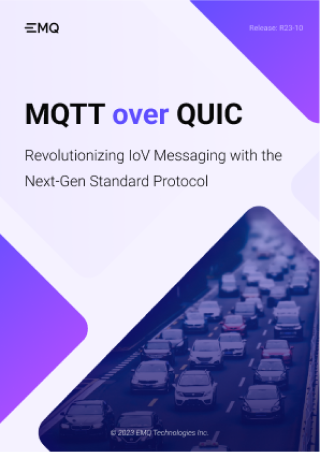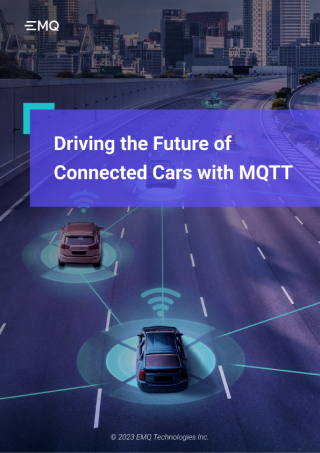Why Are Connected Cars Transforming the Auto Industry?

Table of Contents
A connected car is a vehicle equipped with internet connectivity and a range of sensors and communication devices that allow it to interact with its surroundings. These technologies can include GPS navigation, entertainment systems, diagnostic sensors, and communication tools that enable the car to send and receive data.
Connected cars can also communicate with other vehicles, traffic infrastructure, and online services, providing drivers with real-time information and enhancing safety, comfort, and convenience. This is part of an article series regarding the internet of vehicles (IoV).
The Use Cases and Applications for Connected Cars
Connected cars have two main types of applications: single-vehicle and cooperative. Single-vehicle applications refer to technologies installed in individual vehicles, providing functions such as driver assistance and infotainment.
Cooperative applications, on the other hand, enable communication between vehicles and other elements of the road infrastructure, such as traffic lights and other vehicles. These applications rely on vehicle-to-vehicle and vehicle-to-infrastructure communication to improve safety and traffic flow.
Connected cars offer a range of use cases that can enhance the driving experience and improve road safety. Here are eight main use cases of connected cars:
- Commerce: Connected cars can facilitate e-commerce transactions by providing a platform for in-car purchases and payments. This can include everything from fuel and toll payments to ordering food and groceries.
- Mobility management: They can help manage mobility by providing real-time information about traffic conditions and alternative routes. This can help drivers to avoid congestion and improve their driving experience.
- Vehicle management: Connected systems can provide remote diagnostics and maintenance alerts, enabling drivers to stay on top of vehicle maintenance and avoid breakdowns.
- Safety: Connected car technology can help improve safety by providing real-time warnings about potential hazards, such as pedestrians, other vehicles, and weather conditions.
- Breakdown prevention: Connected cars can help prevent breakdowns by providing early warning signs of potential problems, such as low battery or engine trouble.
- Driver assistance: They often provide driver assistance features, such as lane departure warnings, adaptive cruise control, and automatic emergency braking. These features can help drivers to stay safe and avoid accidents.
- Wellbeing: They might provide well-being features, such as air quality sensors and wellness monitoring. These features can help drivers stay healthy and comfortable during their journey.
- Entertainment: Connected cars can provide a range of entertainment options, such as streaming music, movies, and other content. This can enhance the driving experience and make long journeys more enjoyable.
5 Ways Connected Cars Communicate
Vehicle data can be transmitted in various ways, including:
- Vehicle-to-vehicle (V2V): Enables communication between two or more vehicles. V2V can exchange information about vehicle speed, position, direction, and other parameters. This technology helps to improve road safety by enabling vehicles to communicate with each other and avoid collisions.
- Vehicle-to-infrastructure (V2I): Enables communication between vehicles and traffic infrastructure, such as traffic lights, road signs, and parking meters. V2I can provide real-time information about traffic conditions, roadwork, and other events, enabling drivers to make informed decisions about their route and driving behavior.
- Vehicle-to-pedestrian (V2P): Allows vehicles to communicate with pedestrians and cyclists. V2P can provide warnings to pedestrians about approaching vehicles and vice versa, helping to prevent accidents and improve road safety.
- Vehicle-to-cloud (V2C): Allows vehicles to communicate with cloud-based services. V2C can provide real-time traffic updates, weather information, and other data that can help drivers to plan their route and improve their driving experience.
- Vehicle-to-everything (V2X): This technology is an amalgamation of all the above. It enables communication between vehicles, traffic infrastructure, pedestrians, and cloud-based services. V2X can provide a comprehensive view of the road environment, enabling vehicles to make informed decisions about their driving behavior and improve road safety.
Read our blog: How to Achieve Flexible Data Collection for Internet of Vehicles

The Different Types of Connected Car Infrastructure
Connected cars can have two types of systems: embedded and tethered.
- Embedded systems are built into the car and are part of its original design. They provide a range of features such as internet connectivity, GPS navigation, entertainment systems, and diagnostic sensors. These systems can communicate with other embedded systems within the car, as well as with external systems like traffic infrastructure and other vehicles.
- Tethered systems, on the other hand, rely on external devices such as smartphones or tablets to provide connectivity and features. These systems are usually connected to the car via USB or Bluetooth and can provide features such as streaming music, real-time traffic updates, and remote access to the car's diagnostic system.
Learn more in our detailed guide to connected cars technology (coming soon)
What Are the Challenges Connected Cars Face?
Connected cars offer numerous benefits to drivers, passengers, and the overall transportation ecosystem. However, along with these benefits come challenges that need to be addressed to fully realize the potential of connected car technology.
- Cybersecurity: As vehicles become more connected, they also become more vulnerable to cyber threats. Ensuring the security of vehicle software, communication channels, and data is a critical challenge that must be addressed to protect user privacy and maintain overall system integrity.
- Data privacy: Connected cars generate and transmit large amounts of data, raising concerns about how this data is collected, stored, and used. Addressing data privacy concerns and complying with data protection regulations is crucial for the successful deployment of connected car technology.
- Interoperability: With various components, systems, and external services involved, ensuring that they can work together seamlessly is essential. Developing and adopting industry-wide standards and protocols will be critical to ensuring interoperability and compatibility.
- Regulatory compliance: Connected cars must meet evolving regulatory requirements related to safety, emissions, data protection, and other areas. Compliance with these regulations will be crucial for the successful deployment of connected car technology.
- Infrastructure development: To fully realize the potential of connected cars, significant investment in infrastructure, such as communication networks, smart city technologies, and charging stations for electric vehicles, will be required.
Read our blog post: Design of Million-Level Message Throughput Architecture for an IoV Platform
How Does MQTT Benefit Connected Cars?
MQTT (Message Queuing Telemetry Transport) is a lightweight messaging protocol designed for situations where low bandwidth, high latency, or unreliable networks are common. Its publish-subscribe model makes it suitable for many connected car scenarios.
Connected cars and MQTT can work together effectively to enable efficient communication and data exchange between vehicles, infrastructure, and other devices in the Internet of Things (IoT) ecosystem.
Here are some potential use cases for MQTT in connected cars:
- Vehicle telematics: MQTT can be used to transmit telematic data, such as vehicle location, speed, and diagnostic information, from the connected car to a remote server or cloud-based platform for analysis and monitoring. This data can then be used for real-time feedback, preventive maintenance, and fleet management services.
- Vehicle-to-Infrastructure (V2I) communication: MQTT can facilitate communication between connected cars and smart city infrastructure, such as traffic lights, parking sensors, and charging stations. This can enable features like intelligent traffic management, smart parking, and efficient use of electric vehicle charging networks.
- Vehicle-to-Vehicle (V2V) communication: MQTT can be used to exchange information between connected cars, enabling cooperative driving scenarios, collision avoidance, and improved traffic flow. This can enhance safety and efficiency in connected vehicle environments.
- Integration with IoT ecosystems: MQTT can help connected cars interact with other IoT devices, such as smart home systems, wearable devices, and smartphones, enabling features like remote vehicle control, personalized infotainment experiences, and seamless transitions between different connected environments.
- Infotainment systems: MQTT's publish-subscribe model can be employed to deliver real-time information, such as news, weather updates, and traffic conditions, to the vehicle's infotainment system. This can enhance the user experience and help drivers make informed decisions on the go.

How EMQX Powers Connected Car Communication
EMQX provides connectivity and messaging solutions for IoT. It provides the most scalable MQTT messaging platform designed for high-performance, scalability and fault-tolerance. EMQX enables software in connected cars to communicate with each other, with edge servers, and with the cloud. It lets you move and process IoV data reliably in real-time, to easily build a secure, reliable and scalable connected car platform with innovative applications.
EMQX has proven experience in the connected car market. As of 2023, over 20 globally OEM manufacturers and more than 30 Tier 1 TSP providers have chosen EMQX as their preferred MQTT-based connected car data access solution. Over 20 million vehicles access EMQX commercial products and services worldwide.

Key advantages of EMQX for connected cars include:
As an enterprise-grade MQTT message platform, EMQX can help on connected car application innovation with following advantages:
- Real-time communication: EMQX provides a reliable and efficient communication platform for connected car devices and systems, allowing real-time data exchange and analysis. This can enable innovative applications that require fast, responsive communication.
- Scalability: EMQX is highly scalable, capable of handling large volumes of connectivity and message traffic. This is essential for connected car applications involving a large number of devices and sensors.
- Security: EMQX provides robust security features, such as TLS encryption, authentication, and access control, which are essential for protecting sensitive data in a connected car environment. This can enable innovative applications that require secure data exchange.
- Flexible Integration: the EMQX platform supports data bridges and APIs, allowing connected car solution providers to connect various database, MQ and backend systems on cloud, including sensors, infotainment systems, and more. This can enable innovative applications that require integration with diverse system architectures.
- Analytics and monitoring: EMQX provides real-time monitoring and analytics capabilities, enabling connected car solution providers to track device connections, message traffic, and other important metrics in real time. This can enable innovative applications that require data analytics.
- Customization: EMQX is highly customizable and can be configured to meet the specific needs of a connected car solution, allowing solution providers to build unique and innovative applications.
